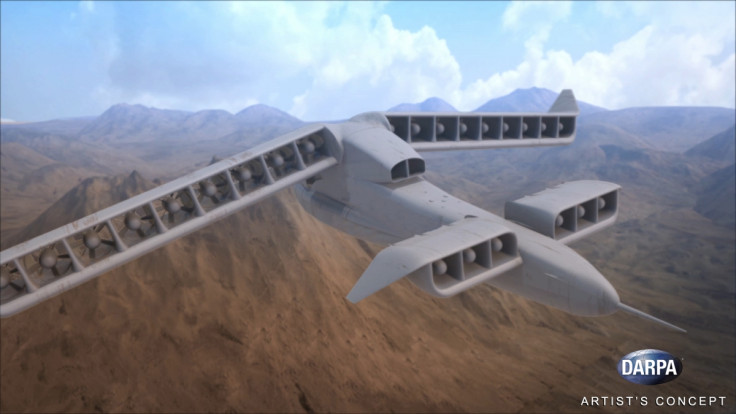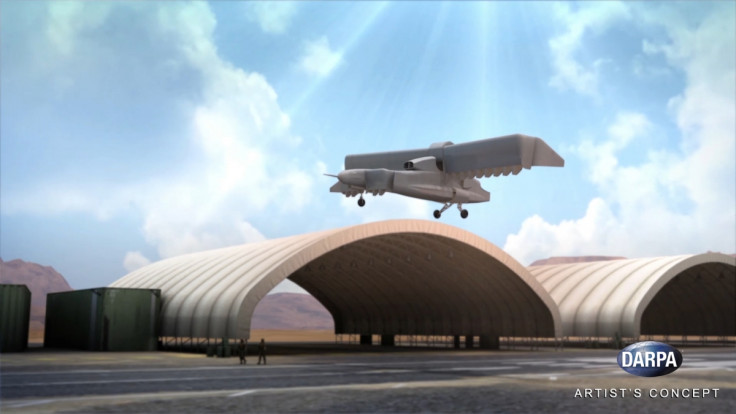Darpa reveals unmanned vertical take-off X-Plane concept with 24 propellers and 4,000hp

The US Defense Advanced Research Projects Agency (Darpa) has revealed more details about its experimental unmanned vertical take-off and landing (VTOL) X-Plane prototype, while announcing the award of the Phase 2 contract to Aurora Flight Sciences.
In March 2014, Darpa launched a new experimental programme to spearhead the development of better unmanned aircraft that would be able to hover, take-off and land vertically. At the moment, most aircraft take off horizontally and only drones have the capability to take off vertically, so there is a great deal of interest in building aircraft that have the ability to take-off vertically like spaceships in popular culture and then morph into fixed-wing aircraft in mid-air.
Darpa set Boeing, Sikorsky Aircraft Corporation, Karem Aircraft and Aurora Flight Sciences a challenge to build aircraft that can achieve a top sustained flight speed of 345 mph (555 km/hr) to 460 mph (740 km/hr), and improve the aircraft's hovering efficiency from 60% to at least 75%.
The new VTOL aircraft must also be able to carry at least 4,540-5,440kg, which is about 40% of the aircraft's projected weight and the airplane manufacturers were given until late 2015 to submit their designs.
VTOL X-Plane will have 24 propellers
Out of the designs submitted, Aurora Flight Science's design is the only that has been chosen to be built as a prototype, because the firm succeeded in creating a design that is able to make the radical improvements needed in vertical and cruising flight capabilities possible.
Aurora's VTOL X-Plane prototype will feature two large rear wings, two smaller front canards (short winglets mounted near the nose of the aircraft) and a 4,000 horsepower turboshaft engine, that will power 24 ducted fan propellers – nine propellers in each wing and three propellers in each canard.
For forwards flight, the canards would tilt the fan thrust in a rearwards direction, while hovering would require the fans to be tilted downwards. This design is somewhat similar to the Greased Lightning unmanned aerial vehicle (UAV) prototype being worked on by Nasa, which is a battery-powered, 10-engine plane prototype that uses electric propulsion technology to help it take off vertically.
Darpa envisions quiet electric aircraft in the skies

Darpa wants to perform the first test flights for the X-Plane prototype in 2017 or 2018, and the technologies demonstrated would very likely make their way into manned military aircraft in the future, should the tests prove successful.
"Just when we thought it had all been done before, the Aurora team found room for invention — truly new elements of engineering and technology that show enormous promise for demonstration on actual flight vehicles. This is an extremely novel approach. It will be very challenging to demonstrate, but it has the potential to move the technology needle the farthest and provide some of the greatest spinoff opportunities for other vertical flight and aviation products," said Ashish Bagai, DARPA program manager.
"This VTOL X-Plane won't be in volume production in the next few years but is important for the future capabilities it could enable. Imagine electric aircraft that are more quiet, fuel-efficient and adaptable and are capable of runway-independent operations. We want to open up whole new design and mission spaces freed from prior constraints, and enable new VTOL aircraft systems and subsystems."
© Copyright IBTimes 2025. All rights reserved.






















